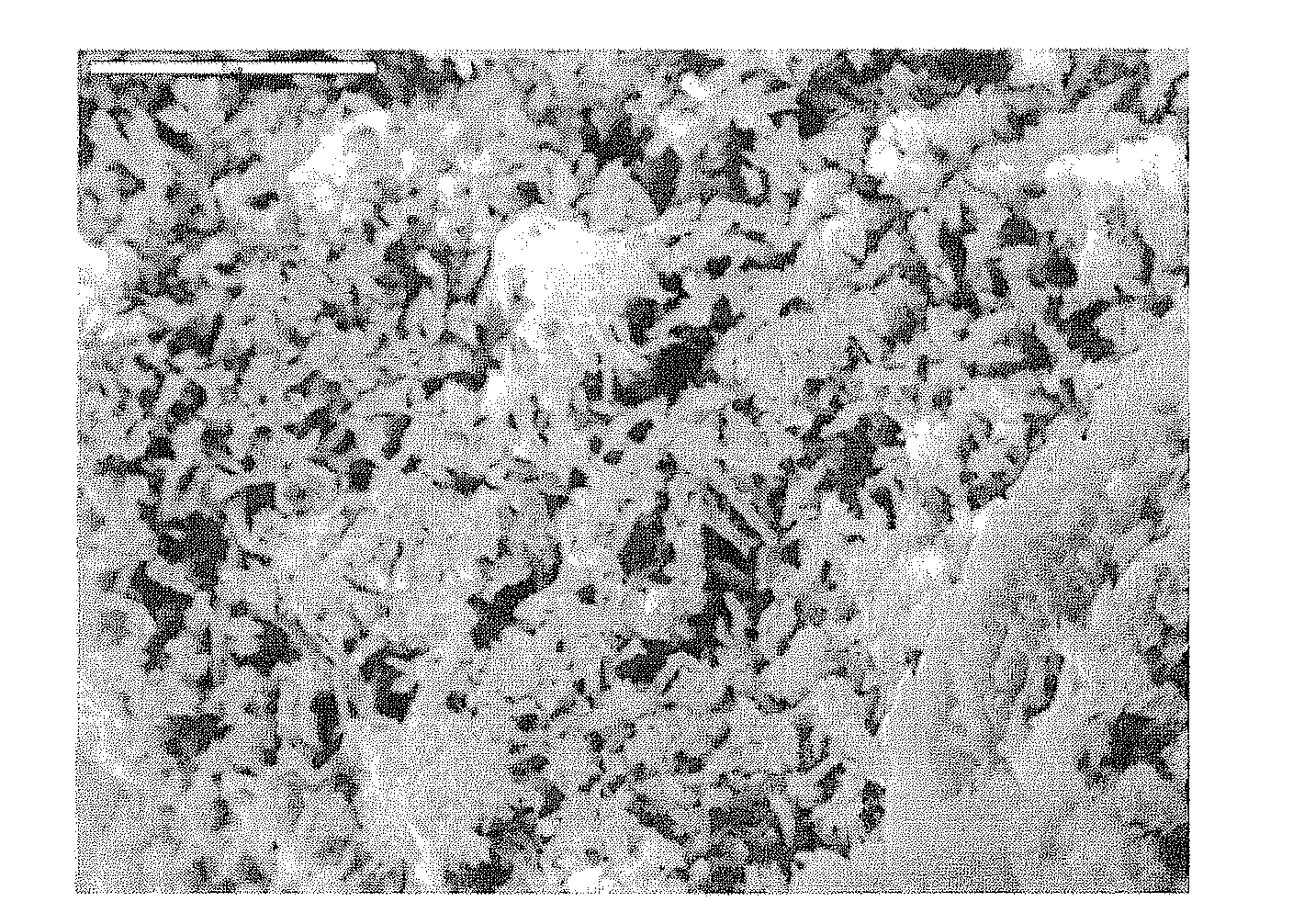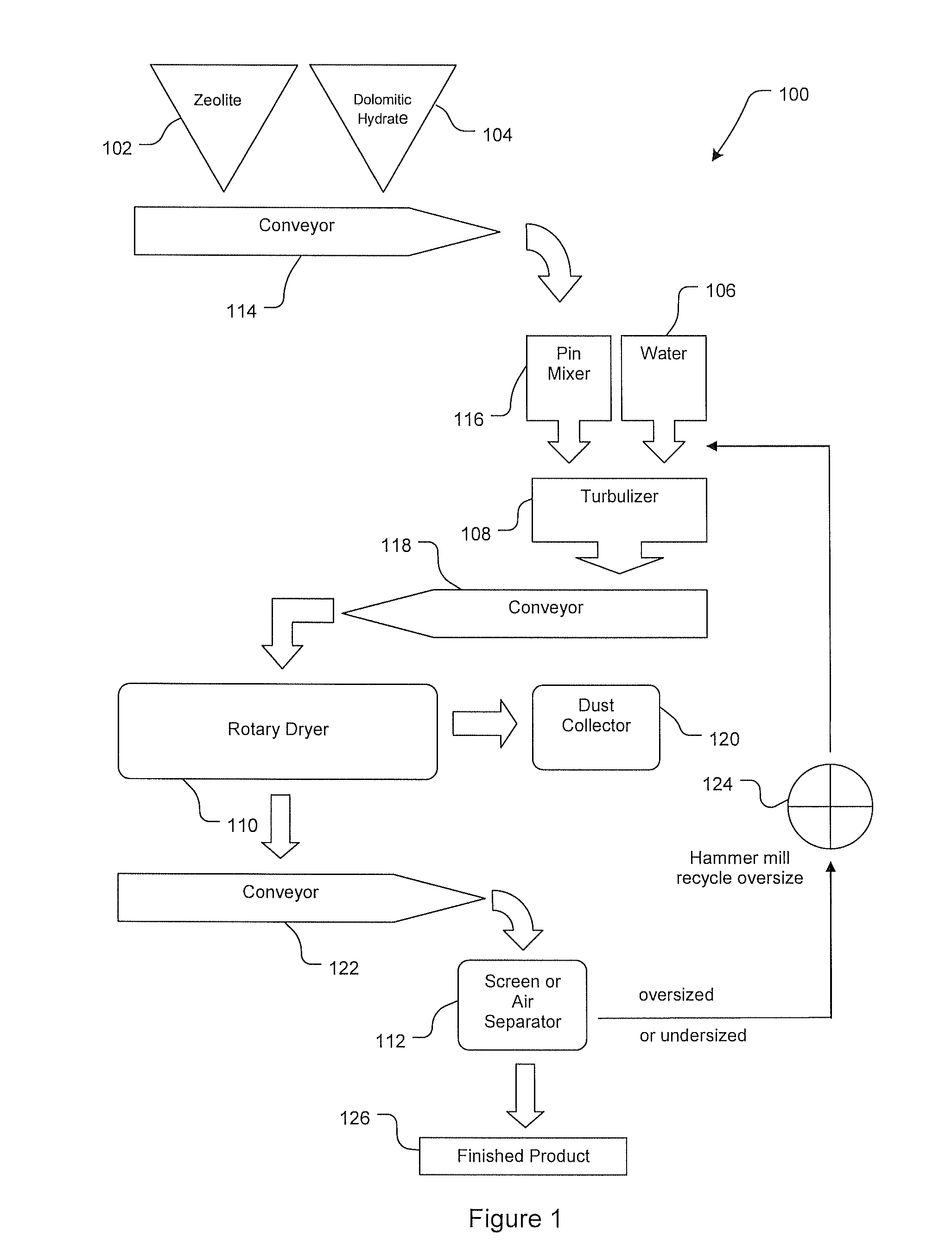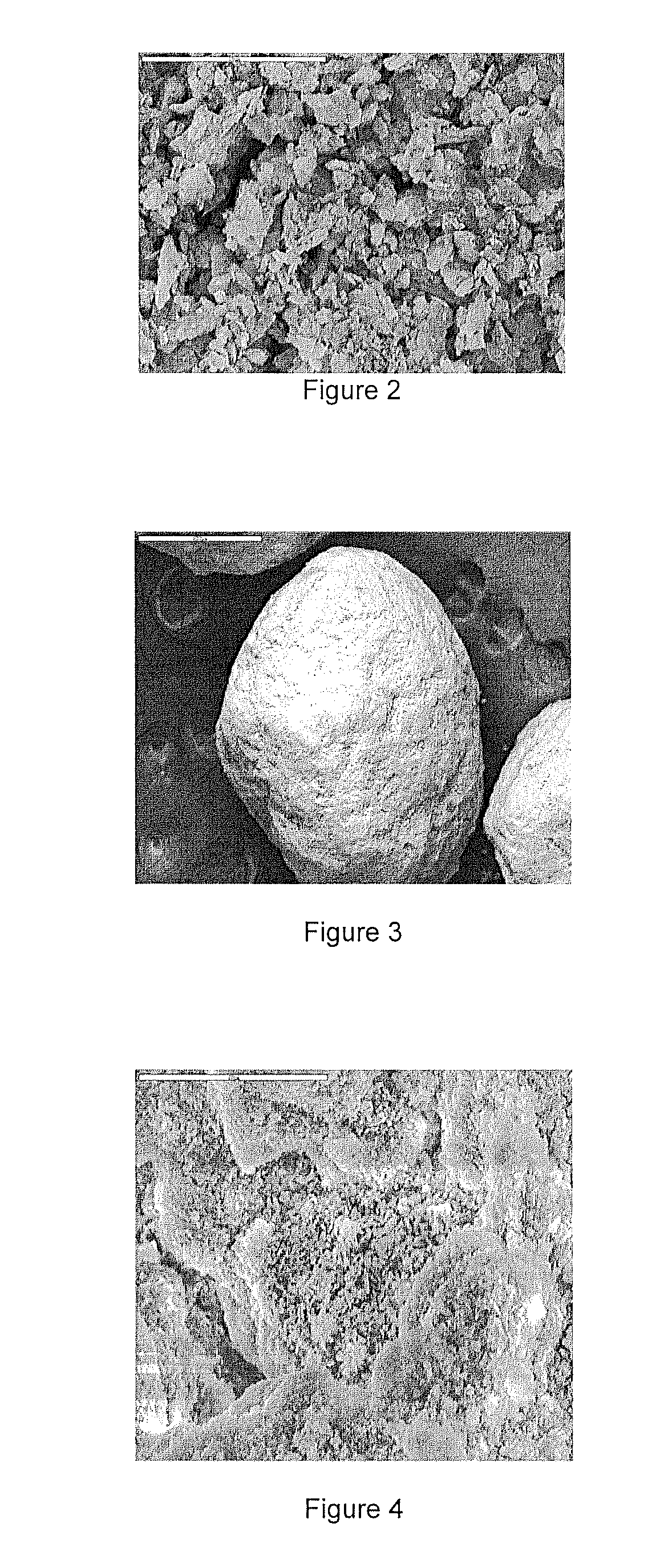Ruminant Mineral Feed Additive
a feed additive and mineral feed technology, applied in the field of feed additives, can solve the problems of animal death, rumen digestion efficiency, and change in the blood-base balance,
- Summary
- Abstract
- Description
- Claims
- Application Information
AI Technical Summary
Benefits of technology
Problems solved by technology
Method used
Image
Examples
example no.1
[0041]Example No. 1
A Comparison of the Acid Consuming Capacity of the RMFA with Sodium Bicarbonate
[0042]Ruminal fluid was obtained from a lactating cow at feeding. The fluid was strained through cheese cloth and then frozen overnight to remove feed particles and destroy microbial activity. The ruminal fluid was then strained a second time, divided into 25 ml aliquots, then warmed to 30 degrees C. in a shaking water bath. Ruminal fluid was pH 6.75 at this time. Sodium bicarbonate and the ruminant mineral feed additive (RMFA) of the present application were added to 60 ml test tubes containing ruminal fluid in a 1:100 (wt. / vol.) ratio. Test buffers were evaluated in quadruplicate. The test tubes were incubated in a shaking water bath at 39 degrees C. to represent normal ruminal temperature and to approximate the rolling, mixing action of the rumen. Acid consuming capacity was determined by adding 100 micro-liter aliquots of 6 N HCl to each test tube at one-half hour intervals. Solutio...
example no.4
[0048]Example No. 4
A Large Scale Dairy Trial was Run to Examine and Compare Performance of the Product of the Invention and Sodium Bicarbonate
[0049]A dairy herd consisting of 750 cows was fed a diet with a forage content of 51 percent consisting of corn silage and alfalfa hay. Protein was about 17.5 percent and starch was 26.5 percent. Initial buffer treatment was sodium bicarbonate at 0.5 pounds per head per day for the months of September and October. Data were averaged for the entire 750 head dairy herd. The basal diet remained the same and RMFA was substituted for sodium bicarbonate at the same rate of inclusion for the months of November and December. Sodium bicarbonate was switched back for the month of January. The results of this trial are set forth in Table 4. The data show minor changes in milk protein through the trial. Milk production and the percent butterfat tended to increase when rations were changed to the RMFA. Upon switching back to sodium bicarbonate the milk pro...
PUM
 Login to View More
Login to View More Abstract
Description
Claims
Application Information
 Login to View More
Login to View More - R&D
- Intellectual Property
- Life Sciences
- Materials
- Tech Scout
- Unparalleled Data Quality
- Higher Quality Content
- 60% Fewer Hallucinations
Browse by: Latest US Patents, China's latest patents, Technical Efficacy Thesaurus, Application Domain, Technology Topic, Popular Technical Reports.
© 2025 PatSnap. All rights reserved.Legal|Privacy policy|Modern Slavery Act Transparency Statement|Sitemap|About US| Contact US: help@patsnap.com



